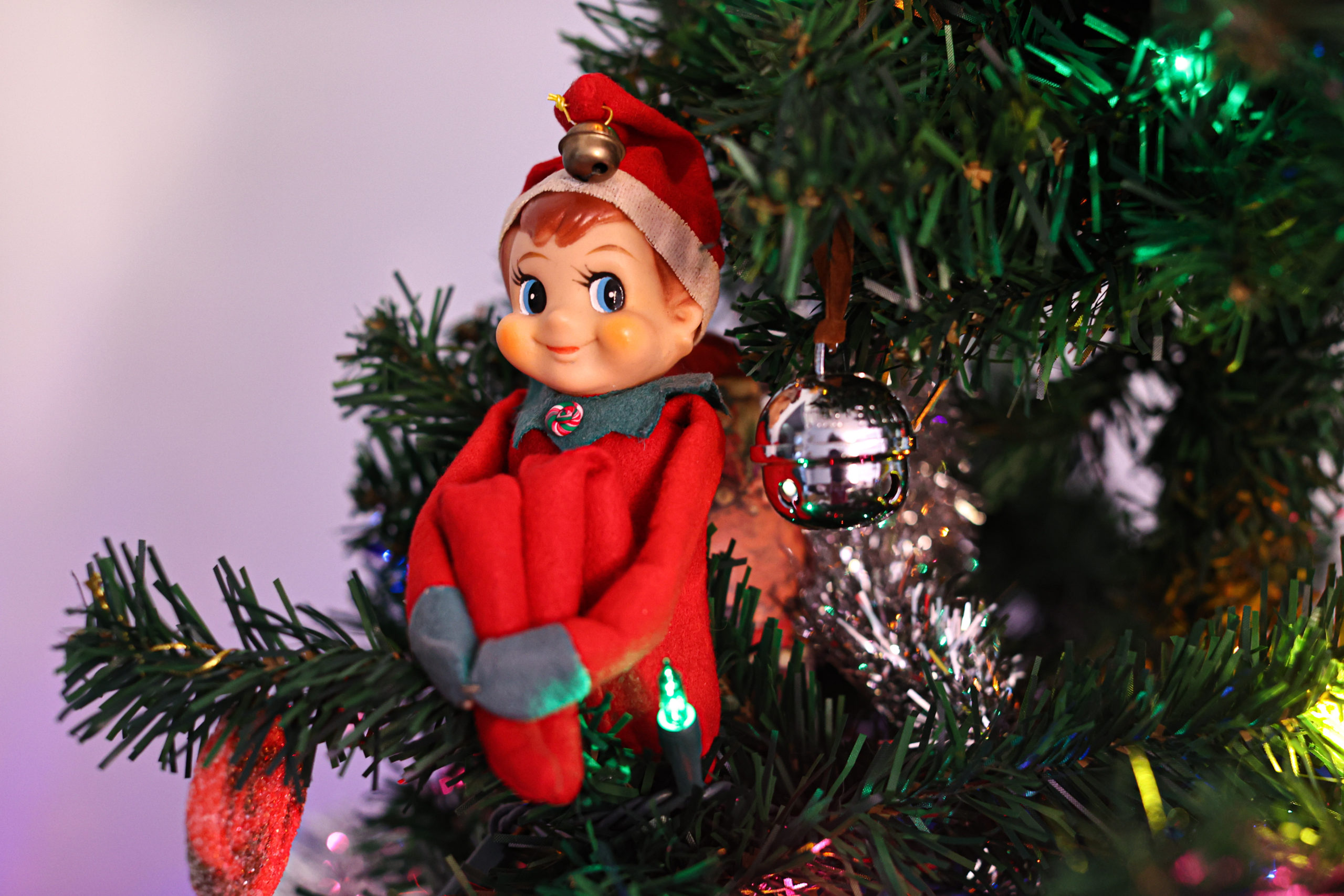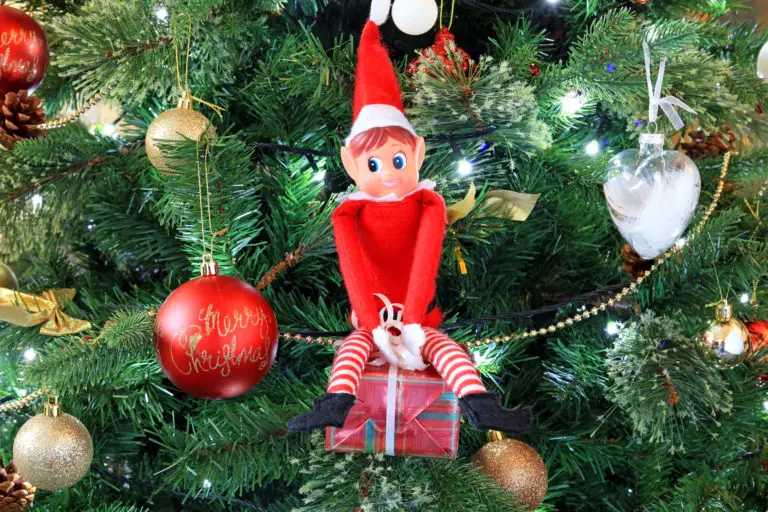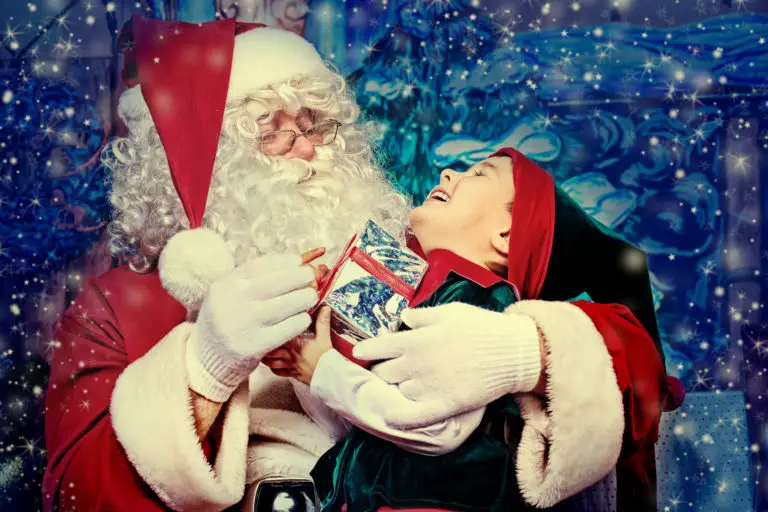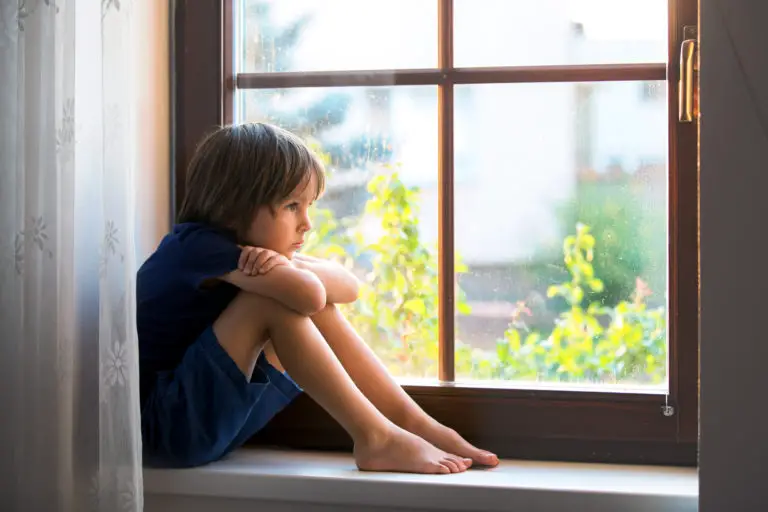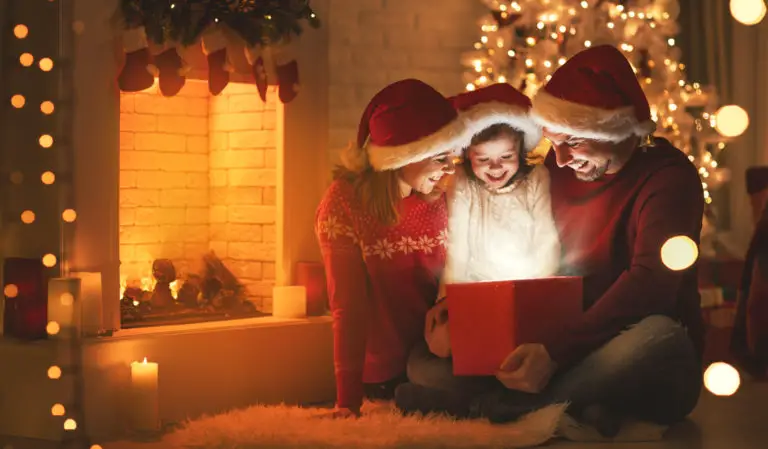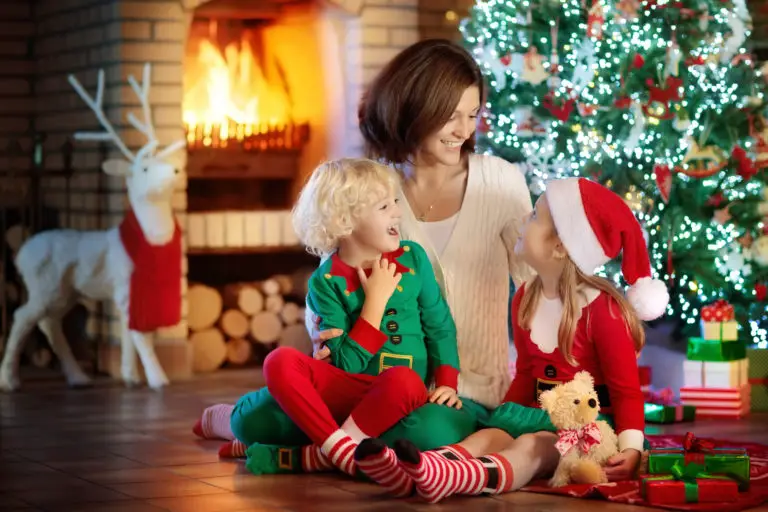As the holiday season approaches, the elves are emerging from their slumber, ready to embark on their annual mission of mischief and merriment. For many families, the tradition of ‘Elf on a Shelf’ has become as synonymous with Christmas as stockings and candy canes. This pint-sized sentinel, tasked with reporting children’s behavior back to Santa Claus, has enchanted youngsters and delighted parents for years. But what if I told you that beneath the twinkling eyes and whimsical adventures, ‘Elf on a Shelf’ holds a hidden key to unlocking the fascinating world of child psychology?
Understanding ‘Elf on the Shelf’
During the festive holiday season, you may have heard whispers about a mystical holiday figure that has become a ubiquitous presence in countless homes: the “Elf on the Shelf.” This pint-sized, often mischievous character has captured the imaginations of children and parents alike, weaving its way into the fabric of modern holiday traditions. In this section, we will delve into the world of the “Elf on the Shelf,” unraveling its origins, its meteoric rise to popularity, and the intriguing premise that lies at the heart of this enchanting tradition.
- Origins and Emergence
To truly grasp the phenomenon of the “Elf on the Shelf,” we must first venture back to the early 2000s. It was during this time that Carol Aebersold and her daughters, Chanda Bell and Christa Pitts, gave life to an idea that would go on to shape countless family holiday celebrations. The trio co-authored a children’s book titled “The Elf on the Shelf: A Christmas Tradition,” accompanied by a small, plush elf doll.
This book told the enchanting story of how Santa Claus sends his scout elves to children’s homes during the holiday season. These elves, endowed with the magic of the North Pole, quietly observe the children’s behavior each day and then return to Santa with a nightly report. They are known to be mischievous, hiding in new places each morning, awaiting the eager eyes of the children to discover their antics. This tale, filled with wonder and excitement, sparked the imaginations of children and parents alike.
- Santa’s Watchful Eye
At the core of the “Elf on the Shelf” tradition lies a captivating premise—an elf that watches over children’s behavior and relays daily reports to none other than Santa Claus himself. The thought of Santa’s trusted emissaries observing every move and action of children adds an element of enchantment to the holiday season.
Each night, after the household has gone to bed, the elf embarks on its mission to find a new vantage point from which to observe. Whether perched atop a bookshelf, nestled in the branches of the Christmas tree, or peeking out from behind a curtain, the elf remains vigilant and watchful. Its primary role is to encourage children to be on their best behavior in the lead-up to Christmas, reminding them that Santa’s gift list is updated daily, based on their conduct.
The knowledge that the elf is reporting back to Santa fosters a sense of responsibility and anticipation. Children become eager to showcase their kindness and good deeds, striving to remain in Santa’s favor. It’s a delightful notion that transforms everyday actions into opportunities for virtue and goodwill.
Intriguingly, the “Elf on the Shelf” not only captivates the imagination of children but also provides parents with a creative and interactive way to promote positive behavior during the holiday season. As the tradition unfolds, parents can use the elf’s presence to emphasize the importance of kindness, generosity, and empathy—a heartwarming lesson amid the hustle and bustle of the festive season.
Alternative Traditions to Promote Positivity and Individuality
While the psychological effects of Elf on the Shelf are cause for concern, there are alternative holiday traditions that can foster positive values and individuality in children.
The Reindeer In Here is a delightful tradition that embraces each child’s unique qualities. This furry friend encourages children to appreciate their individuality and teaches them that being themselves is something to celebrate. Through the storybook that accompanies the reindeer, children learn about inclusivity and acceptance of others’ differences. It offers a refreshing departure from surveillance and instead focuses on promoting a sense of belonging and self-acceptance.
Another alternative, Kindness Elves, shifts the focus from monitoring behavior to encouraging acts of kindness and empathy. These enchanted elves inspire children to engage in acts of generosity and compassion, spreading love and goodwill during the holiday season. By emphasizing virtues rather than material rewards, parents can help instill valuable character traits in their children.
Signs of Psychological Stress and How to Address Them
Participating in holiday traditions can be a joyful and cherished experience for families. However, it’s essential for parents to remain vigilant and observant of their children’s well-being during these festivities. While traditions like “Elf on the Shelf” are intended to be fun, they can inadvertently trigger psychological stress in some children. Recognizing the signs of stress and knowing how to address them is crucial for maintaining a positive holiday atmosphere. In this section, we will explore the signs of psychological stress in children and provide practical tips to alleviate any discomfort they may be feeling.
Recognizing Signs of Psychological Stress
Children may not always express their stress overtly, but there are several signs that attentive parents can watch for:
- Increased Anxiety: If your child becomes noticeably more anxious during the holiday season, it could be a sign of stress. This anxiety might manifest as nervousness, restlessness, or difficulty sleeping.
- Changes in Behavior: Abrupt changes in behavior, such as irritability, mood swings, or becoming unusually quiet, can be indicators of stress. Pay attention to shifts in their usual demeanor.
- Withdrawal: Some children might withdraw from social interactions and prefer to spend more time alone. They may become more isolated, avoiding family gatherings and activities they typically enjoy.
- Self-Deprecating Statements: Children experiencing stress may make self-critical or negative statements about themselves. Listen for phrases like, “I’m not good enough,” or “Nobody likes me.”
Addressing Psychological Stress
Once you recognize signs of psychological stress in your child, it’s essential to address the situation promptly and provide the necessary support. Here are some tips to help alleviate potential stress caused by holiday traditions:
1. Open Communication: Initiate a conversation with your child in a safe and non-judgmental environment. Let them know that you are there to listen and support them. Encourage them to express their feelings and concerns.
2. Validate Their Feelings: It’s important to validate your child’s emotions, even if you don’t fully understand why they’re feeling stressed. Let them know that their feelings are valid, and it’s okay to feel this way.
3. Adjust Expectations: Be flexible with your holiday traditions and expectations. If a particular tradition or activity is causing stress, consider modifying or skipping it altogether. Focus on creating a holiday environment that suits your child’s comfort level.
4. Reassurance: Remind your child of your unconditional love and support. Reinforce their self-worth and emphasize that you value them for who they are, not for their behavior or performance.
5. Seek Professional Help if Needed: If your child’s stress persists or intensifies, it may be beneficial to consult a child psychologist or therapist. Professional guidance can provide valuable insights and strategies to manage stress.
6. Encourage Relaxation Techniques: Teach your child simple relaxation techniques, such as deep breathing exercises or mindfulness activities, to help them manage their stress and anxiety.
7. Create a Calm Environment: Ensure that your home provides a calm and peaceful atmosphere during the holidays. Reduce noise and distractions, and establish routines that promote a sense of stability.
While holiday traditions like “Elf on the Shelf” can be delightful, they may inadvertently cause psychological stress in children. Being attentive to signs of stress and taking proactive steps to address them can help ensure a more enjoyable holiday season for the whole family. Remember that open communication, validation, and unconditional support are key to helping your child navigate any stress they may experience during this festive time.
The Role of Parental Involvement
The “Elf on the Shelf” tradition isn’t just about a mischievous little elf moving around the house during the holiday season; it’s an opportunity for parents to actively engage with their children and impart valuable life lessons. Parental involvement in “Elf on the Shelf” activities is crucial for maximizing the positive impact of this tradition on kids. In this section, we will delve into the significance of parents’ role, explore how this tradition can serve as a teaching tool, and provide practical suggestions for striking a balance between fun and education.
Examine the Importance of Parental Involvement
The elf might be the star of the show, but it’s the parents who hold the director’s chair in this holiday production. Active parental involvement in “Elf on the Shelf” activities not only enhances the magic but also helps in shaping children’s behavior and values during the festive season. Here’s why it matters:
- Building Trust: The elf’s nightly adventures are based on trust. Children need to believe that the elf indeed reports to Santa. Parents play a pivotal role in nurturing this trust and ensuring the elf remains a credible character.
- Emotional Connection: The elf becomes a cherished part of the family when parents actively participate. It fosters a sense of connection, and children feel the warmth and togetherness that the holiday season is all about.
- Teaching Responsibility: Parents can use the elf to teach responsibility. Assigning tasks like preparing a small treat for the elf or ensuring the elf’s safety can instill a sense of duty and accountability in children.
Discuss How Parents Can Use the Tradition to Teach Valuable Lessons
“Elf on the Shelf” is not just about fun and games; it can also be a powerful tool for teaching life lessons. Here’s how parents can use this tradition to impart valuable wisdom:
- Kindness and Generosity: Encourage children to think beyond themselves. Suggest that the elf might appreciate it if they leave a little note or a small gift for someone less fortunate, teaching them about the joy of giving.
- Good Deeds: Incorporate the idea that the elf loves to see acts of kindness. Encourage children to perform good deeds like helping with chores or being extra polite to siblings.
- Patience and Delayed Gratification: Waiting for the elf’s nightly surprises teaches children patience and the value of delayed gratification, important life skills in a world of instant gratification.
Offer Suggestions for Parents to Strike a Balance Between Fun and Educational Aspects
Finding the right balance between fun and education is key to making the most of the “Elf on the Shelf” tradition. Here are some practical tips for parents:
- Set Clear Expectations: Let children know that while the elf’s visits are filled with surprises, it’s also a time for learning. Discuss the values and behaviors you’d like to emphasize during the holiday season.
- Incorporate Educational Themes: Plan elf activities that align with educational themes. For instance, the elf can leave a note encouraging children to read a holiday book or solve a math problem.
- Engage in Conversations: Use the elf’s activities as conversation starters. Ask open-ended questions about what they think the elf would like to see or what they can do to make the elf happy. This encourages critical thinking and reflection.
- Celebrate Achievements: Acknowledge and celebrate when your child demonstrates positive behaviors or values in line with the “Elf on the Shelf” tradition. This reinforces their understanding and motivation.
Parental involvement in “Elf on the Shelf” activities is more than just moving a figurine around the house; it’s an opportunity to create lasting memories and instill valuable life lessons in your children. By actively engaging in the tradition and finding the right balance between fun and education, parents can make the holiday season truly magical while nurturing their child’s personal growth.
The Importance of Prioritizing Positive Values during the Holiday Season
Ultimately, the choice of participating in Elf on the Shelf or any other holiday tradition rests with each individual family. However, it is crucial to prioritize positive values and behaviors that promote the overall well-being of children.
https://youtu.be/X-I3sRLquxk?si=rbv5DM9OVPEMXfqy
By fostering kindness, empathy, and inclusivity, parents can create a truly meaningful and memorable holiday experience for their children. Encouraging children to embrace their uniqueness, perform acts of kindness, and develop their own moral compass will contribute to their growth as compassionate individuals.
Remember, the magic of the holiday season lies not in surveillance or materialism, but in the love, warmth, and joy shared among family and friends.
Sources:
What Is Elf on the Shelf, and How Does It Work?
“Elf on the Shelf” May Be Making Your Kids Paranoid
The Unnecessary Stress of Elf on the Shelf
Is elf on the shelf bad for kids’ mental elf?

This Site Was Inspired By An Interest in Protecting the Environment:
We had the privilege and joy of learning from Dr. Charlie Stine who instilled a love for the natural world through incredible field trips with the Johns Hopkins Odyssey Certificate program in Environmental Studies. At the time, the program was endorsed by the Maryland Department of Natural Resources. Sadly, after Dr. Stine retired, the program was phased out. We hope that we honor his legacy by shining a bright light on environmental issues and sharing good news about the success of various conservation programs when possible.
